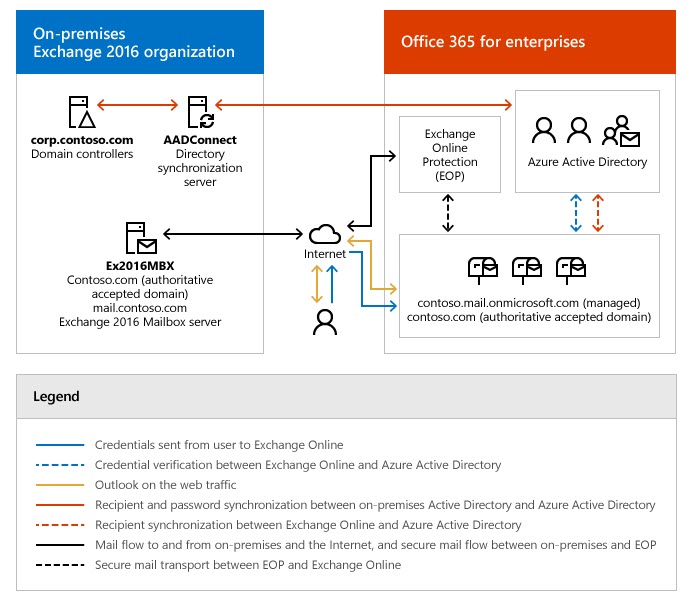
Simplify with Hybrid Exchange
An organisation can connect its on-premises Microsoft Exchange users and cloud users into a single system in a hybrid exchange environment. For instance, using Microsoft 365, an organisation can integrate cloud services like SharePoint Online, Microsoft Teams, and Exchange Online with their on-premises counterparts to create officially supported “Microsoft Hybrid” solutions.
Active Directory Domain Services, Exchange Server, and Outlook client have been the bread and butter of Microsoft’s business productivity suite for two decades. This has resulted in most Office 365 onboarding projects migrating identities and mail. Hybrid migration is deployment of the Exchange Hybrid.
Just as the advantages of creating an Exchange hybrid environment cannot be overlooked, the drawbacks cannot be either. Whether it is right for an organisation depends on several unique factors.
Why a hybrid exchange?
A hybrid exchange environment allows you to combine local environment and the cloud environment as a single mail organisation.
It is practical because the management is on premises – Active Directory. The mailboxes are accessible to manage via a hybrid environment towards Office 365 Exchange Online.
A breakdown of the Hybrid Exchange
Hybrid exchange enables secure email routing between your local and exchange online organisations. It provides a clean and uncluttered experience. However, it cannot be considered easy with an SMTP gateway.
Keeping that exchange hybrid server around allows you to continue to relay the same as it was prior. Administrators can use powerful and familiar exchange management tools to manage team and project communications.
Hybrid exchange is required to migrate as efficiently as possible without user impact and reconfiguration on each device. For example, with a hybrid migration, only a username and password are needed after moving the mailbox.
- Dramatically lower cost of on-premises user accounts with cloud-hosted
- Individual profile and for particular applications
- Regulatory restrictions to store data in particular ways
- Target applications are available only in the cloud
- Provides a centralised administration point and removes the mitigation risk of moving to the cloud
